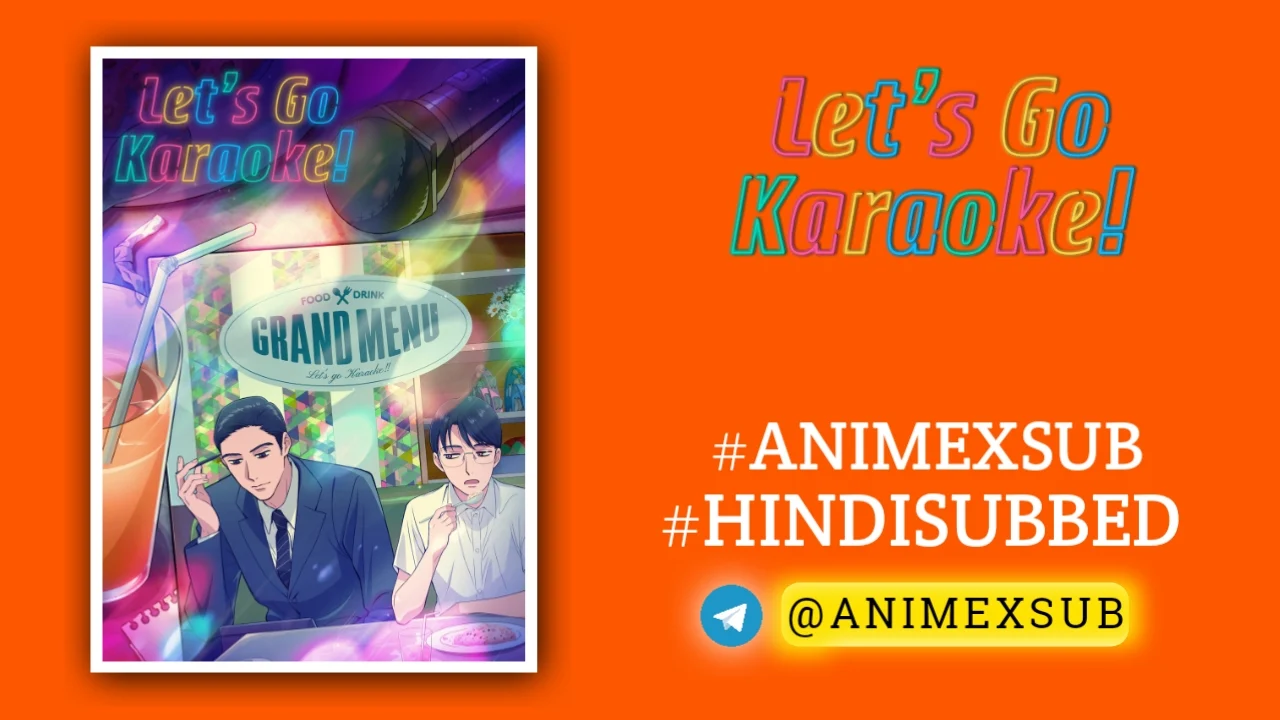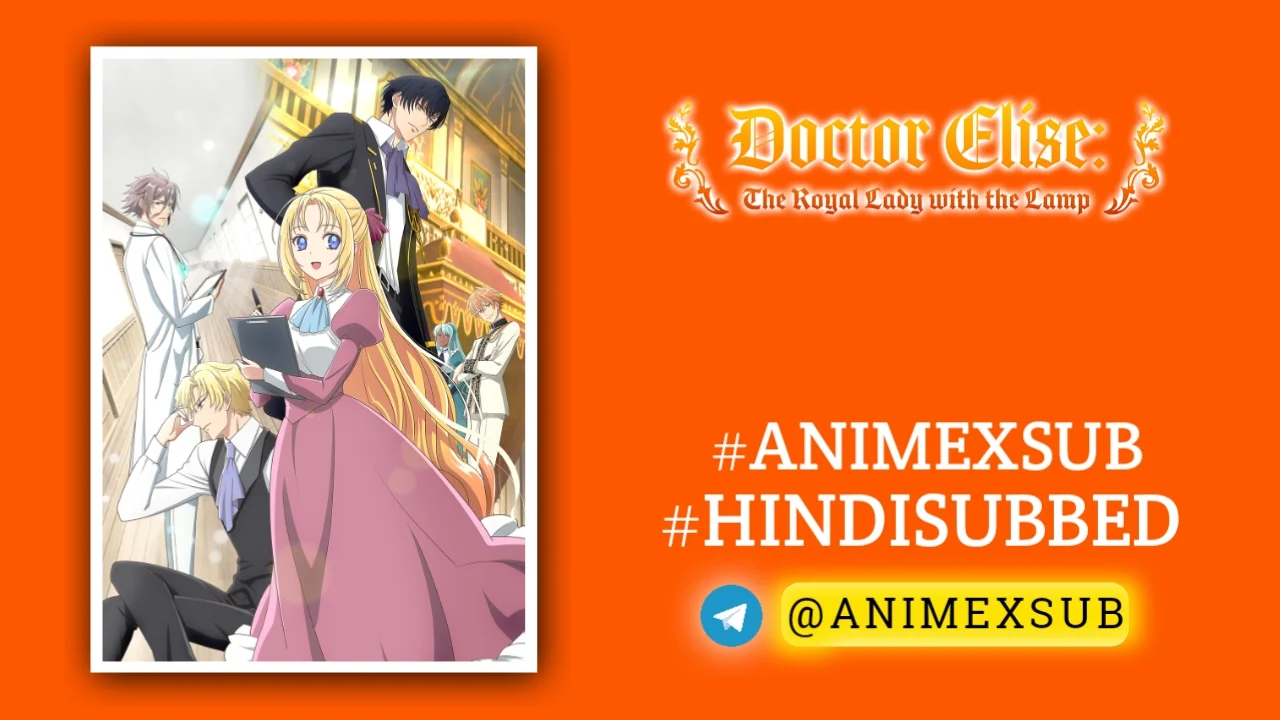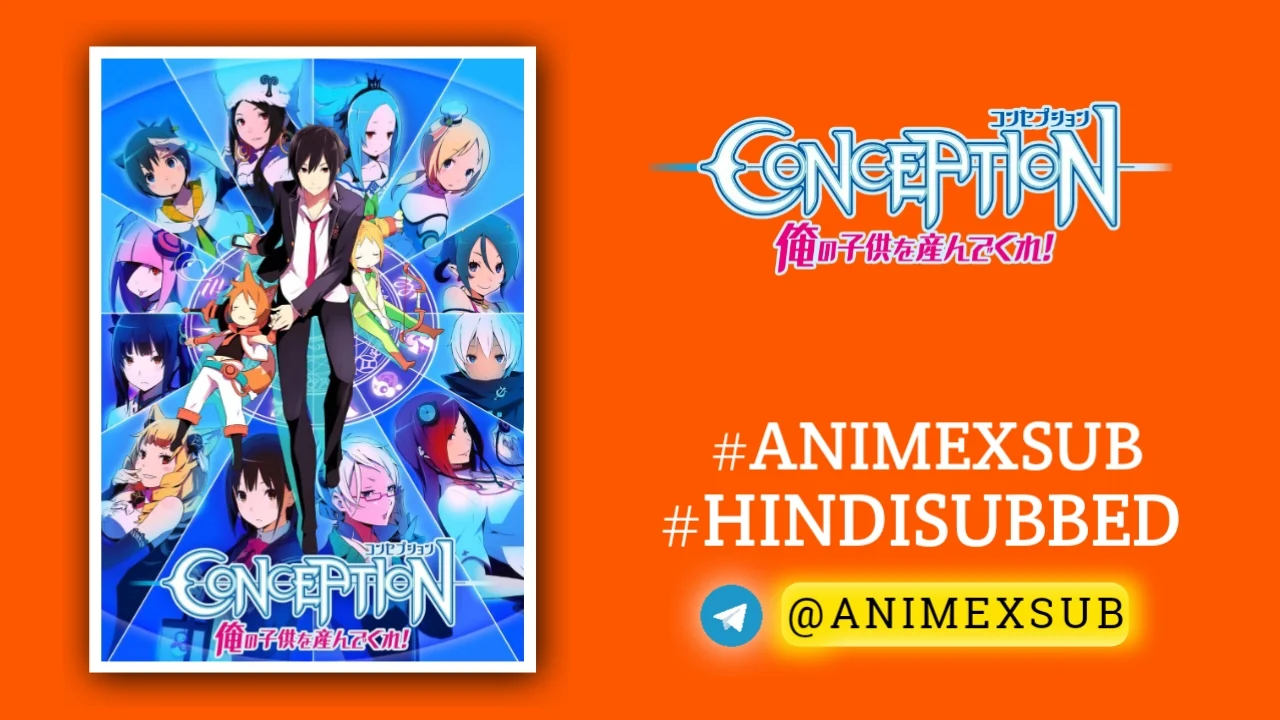
Let’s Go Karaoke! Hindi Subbed [03/05] | Karaoke Iko! Hindi Sub!!

Karaoke Iko!
Let's Go Karaoke!Synopsis
The president of the chorus club, Satomi Oka, is approached by a yakuza named Kyoji Narita. Kyoji’s yakuza group holds a customary karaoke competition, and whoever earns the title of worst singer must get a tattoo. Since he was asked to be Kyoji’s singing teacher, Satomi has no choice but to go along with these practice sessions. Brought together by karaoke, where will Satomi and Kyoji end up? (Source: Crunchyroll)
Watch Trailer
Characters
Let’s Go Karaoke! Season 1: A Harmonious Clash of Worlds That Redefines Coming-of-Age Anime
Let’s Go Karaoke! (Karaoke Iko!), the 2025 anime adaptation of Yama Wayama’s acclaimed manga, is a rare gem that blends the absurdity of a yakuza-run karaoke contest with the tender vulnerability of a middle schooler’s coming-of-age journey. Directed by Asami Nakatani and produced by Doga Kobo, this 12-episode first season, which premiered on July 24, 2025, is a masterclass in balancing quirky humor, understated drama, and poignant character development. It’s not just an anime about singing—it’s a profound exploration of identity, connection, and the courage to find one’s voice in unexpected places. This review dives deep into what makes Let’s Go Karaoke! Season 1 a standout, offering fresh insights into its narrative, themes, and cultural resonance without slipping into promotional fluff.
A Premise That Sings with Originality
At its core, Let’s Go Karaoke! is a story about unlikely connections. Satomi Oka, a stoic third-year middle schooler and head of his school’s choral club, is grappling with the impending loss of his soprano voice as puberty looms. His world of disciplined choir rehearsals is disrupted when Kyouji Narita, a yakuza lieutenant with a penchant for dramatic entrances, accosts him with a bizarre demand: “Let’s go karaoke!” Kyouji needs Satomi’s vocal expertise to avoid coming in last at his boss’s quarterly karaoke competition, where the loser faces a torturous tattoo session from the boss himself—a man with perfect pitch but abysmal tattooing skills. This odd-couple dynamic sets the stage for a narrative that is as hilarious as it is heartfelt.
What makes this premise next-level is its refusal to lean into predictable tropes. The show could have easily devolved into slapstick comedy or a formulaic mentor-student arc, but instead, it crafts a nuanced story about mutual growth. Satomi’s technical precision as a singer contrasts with Kyouji’s raw, unpolished passion, creating a dynamic that feels fresh and authentic. The absurdity of a yakuza obsessing over karaoke isn’t played for cheap laughs but serves as a lens to explore themes of vulnerability, honor, and self-discovery across vastly different worlds.
Character-Driven Storytelling: A Duet of Depth
The heart of Let’s Go Karaoke! lies in its characters, who are rendered with remarkable depth despite the show’s short runtime. Satomi Oka, voiced by Yuma Uchida, is not your typical anime protagonist. He’s reserved, almost cold, with a biting wit that masks his insecurities about his changing voice and uncertain future. His struggle with puberty is portrayed with raw honesty—his faltering high notes during choir practice are not just a plot device but a metaphor for his fear of losing his identity. Episode 3, in particular, showcases Satomi’s emotional turmoil as he snaps at his classmate Wada, who offers to take his solo part, only to immediately regret it. The use of vivid red visuals to depict his inner chaos is a striking directorial choice that elevates the scene beyond typical anime melodrama.
Kyouji Narita, brought to life by Daisuke Ono’s charismatic performance, is equally compelling. Far from the stereotypical menacing yakuza, Kyouji is a bundle of contradictions—intimidating yet earnest, confident yet desperate to avoid his boss’s tattoo needle. His passion for singing, especially his initial insistence on performing X Japan’s “Crimson,” is both hilarious and endearing. The show doesn’t shy away from showing Kyouji’s vulnerabilities, particularly in Episode 1, where his off-key performance is met with Satomi’s deadpan critique: “You’re not singing; you’re shouting.” This moment, underscored by shifting color palettes that mirror the mood, sets the tone for their evolving relationship—one built on mutual respect rather than power dynamics.
The supporting cast, though less developed, adds texture to the narrative. The yakuza boss, with his dual love for karaoke and terrible tattoos, is a delightfully eccentric figure who embodies the show’s blend of menace and absurdity. Satomi’s classmate Wada, while initially seeming like a rival, reveals layers of empathy that enrich the choir subplot. The show’s restraint in not overcrowding the cast ensures that every character serves a purpose, whether it’s to highlight Satomi’s growth or Kyouji’s humanity.
Thematic Resonance: Finding Harmony in Chaos
Let’s Go Karaoke! Season 1 excels in weaving universal themes into its quirky premise. At its core, the show is about the search for identity in moments of transition. Satomi’s struggle with his changing voice parallels Kyouji’s quest to prove himself in a high-stakes karaoke contest, creating a subtle but powerful symmetry. Both characters are navigating worlds where they feel out of place—Satomi in the rough-edged yakuza karaoke booths, Kyouji in the disciplined realm of choral singing. Their unlikely friendship becomes a space where they can confront their insecurities without judgment, a theme that resonates deeply in a world where people often feel pressured to conform.
The show also explores the concept of honor, but not in the typical yakuza sense of violence or loyalty. Instead, honor is reframed as the courage to be vulnerable. Kyouji’s willingness to bare his soul through song, even when it’s painfully off-key, is a testament to this. Similarly, Satomi’s decision to coach Kyouji, despite the risks of associating with a yakuza, reflects his own quiet bravery. The anime’s refusal to romanticize the yakuza world—portraying it as absurd rather than glamorous—further grounds these themes in a way that feels refreshingly honest.
Visual and Auditory Craftsmanship: A Symphony of Style
Doga Kobo’s animation is a standout feature, bringing Yama Wayama’s distinctive art style to life with a modern twist. The character designs retain the manga’s slightly retro aesthetic, reminiscent of 90s BL manga, but are infused with vibrant colors and fluid animation that feel contemporary. The karaoke scenes are a visual highlight, with dynamic camera angles and shifting color schemes that capture the emotional weight of each performance. When Kyouji sings “Crimson” in Episode 1, the screen pulses with energy, only to cut to Satomi’s unimpressed expression, creating a perfect comedic contrast.
The sound design is equally impressive. Takurō Iga’s score blends choral harmonies with playful, pop-infused tracks that mirror the show’s tonal shifts. The karaoke scenes are a masterclass in audio-visual storytelling, with each song choice reflecting the characters’ personalities—Kyouji’s bombastic rock ballads versus Satomi’s precise, classical-leaning selections. The voice acting, particularly Uchida and Ono’s chemistry, adds authenticity to their evolving bond, making even the most absurd moments feel grounded.
Cultural Context: Karaoke as a Universal Language
Let’s Go Karaoke! taps into Japan’s deep love for karaoke, not just as entertainment but as a cultural ritual where people shed their inhibitions. The show uses this setting to bridge generational and social divides, showing how music can connect a middle schooler and a yakuza in ways that transcend their differences. The yakuza’s obsession with karaoke, while played for laughs, also reflects a broader commentary on how subcultures create their own rituals to navigate societal pressures. This cultural specificity, paired with universal themes of self-expression, makes the anime accessible to global audiences while retaining its distinctly Japanese flavor.
Critiques and Missed Opportunities
No show is without flaws, and Let’s Go Karaoke! Season 1 has its share. The pacing, particularly in the early episodes, can feel uneven, with some scenes lingering too long on setup at the expense of deeper character exploration. The drama surrounding Satomi’s choir struggles, while poignant, sometimes feels underdeveloped, with resolutions—like his conflict with Wada—arriving too quickly to fully resonate. Additionally, the show’s reluctance to fully embrace the camp potential of its premise may disappoint viewers expecting a more over-the-top comedy. While this restraint keeps the story grounded, it occasionally mutes the absurdity that could have elevated certain moments.
The age gap between Satomi and Kyouji has sparked some debate, with early manga reviews noting discomfort with perceived romantic undertones. The anime wisely sidesteps this, focusing squarely on platonic camaraderie, but some viewers may still find the dynamic jarring given the yakuza context. The show addresses this by emphasizing mutual respect and keeping their interactions free of any inappropriate subtext, but it’s a tightrope walk that not all viewers will find convincing.
Why It’s Next-Level
What sets Let’s Go Karaoke! Season 1 apart is its ability to take a seemingly absurd premise and transform it into a profound meditation on growth and connection. It’s not just about a yakuza and a choir boy singing together—it’s about two people finding their voices in a world that often demands silence. The anime’s refusal to lean into clichés, coupled with its stellar character work and audiovisual craftsmanship, makes it a standout in the 2025 anime season. It’s a show that doesn’t just entertain but lingers, inviting viewers to reflect on their own moments of vulnerability and courage.
Final Verdict
Let’s Go Karaoke! Season 1 is a triumph of storytelling that harmonizes comedy, drama, and music into a uniquely compelling package. It’s a show that dares to be different, blending the mundane with the absurd to create something truly special. Whether you’re drawn to its quirky humor, its heartfelt character arcs, or its celebration of music as a universal language, this anime is a must-watch for anyone seeking a fresh take on the coming-of-age genre. Satomi and Kyouji’s duet may be off-key at times, but it’s one that will resonate long after the final note fades.
Rating: 8.5/10
Standout Episode: Episode 3 – Satomi’s emotional unraveling and the vivid red visuals make this a turning point for the series.
Where to Watch: Crunchyroll, Ani-One Asia
Support Our Anime Community!
Love watching the latest anime? Help us keep uploading new episodes by join telegram channel ❤️
Join Now!







